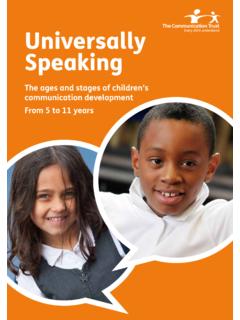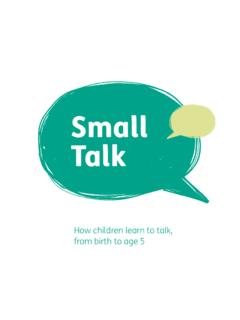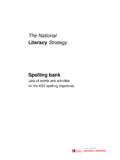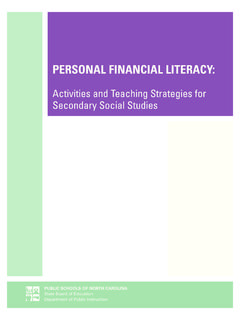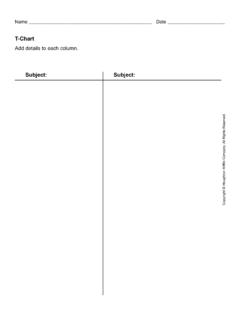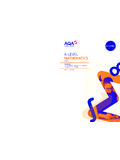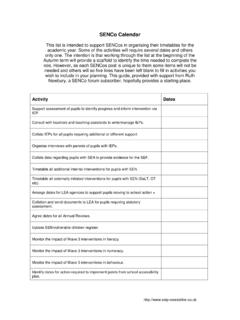Transcription of AAC and Literacy intervention - …
1 AAC and Literacy intervention a review of the literature Professor Janice Murray Manchester Metropolitan University February, 2018 1 Professor Janice Murray, Manchester Metropolitan University, February, 2018 AAC and Literacy intervention a review of the literature The Communication Trust commissioned this literature review as part of a more extensive AAC and Literacy intervention project, funded by the DfE. The aim of the review was to collate research informed evidence of Literacy intervention practices used to support children who also used augmentative and alternative communication (AAC) systems. This scoping review gives an account of the issues involved. Within the constraints of the project brief, its contents are as far ranging as possible but do not claim to be exhaustive. Literature reviewed included publication dates from 1980 to 2017.
2 Literacy assessment in AAC was not the focus of this review; therefore, little mention of it is given here. For more information on assessment see, , Berninger, & Gans, (1986); Dahlgren Sandberg, Smith, & Larson, (2010); Erickson, Clendon, et al, (2008); Geytenbeek, Heim, Knol, Vermeulen, & Oostrom, (2015); Iacono & Cupples, (2004); King, Binger & Kent-Walsh, (2015); Lund & Light, (2007a); Nathan, Stackhouse, Goulandris & Snowling, (2004); Smith, (2005); Soto & Zangari, (2009) Vandervelden & Siegel, (2001). Defining Literacy Literacy refers to both reading and writing activities. Conceptually, we are considering either a top-down or a bottom-up approach to Literacy . A top-down approach starts by considering higher order processes which operate by building up a bank of knowledge based on experiences, expectations and shared knowledge. Bottom-up processes start by focusing on print, and the letter sounds and word structures.
3 Taught in isolation, a bottom up approach may lack context or language cues to support comprehension of the words. The literature suggests that to be a competent, independent reader and speller, both top down and bottom up experiences are important (Smith, 2005). Several models exist for explaining levels of Literacy , many of which imply stages of development and skill ( , Erikson & Koppenhaver, 2007; Stackhouse & Wells, 1997). Not all authors agree with stages, suggesting that this merely reflects teaching approaches, rather than truly describing the processes involved in becoming a skilled reader or speller (Smith, 2005). Stages of Literacy ability may be conceptualised into four broad areas: (i) pre- Literacy , (ii) emergent Literacy , (ii) shared Literacy , and (iv) independent Literacy (Erikson & Koppenhaver, 2007). More traditionally within the UK, Literacy may be conceptualised as four stages: (i) pre- Literacy , which includes recognition of how to hold a book (front to back), (ii) logographic, which includes whole word recognition and the capacity to spell own name, (iii) alphabetic, which includes the ability to apply letter-sound rules to decode new words, sounding out letters and then blending them.
4 At this point, semi-phonetic spelling is apparent and often vowels are omitted, , burglar bgl, (iv) orthographic, which includes the ability to decode chunks of text such as prefixes and suffixes. Spelling has become more logical, following conventional spelling rules (Stackhouse & Wells, 1997). 2 Professor Janice Murray, Manchester Metropolitan University, February, 2018 The primary goal of reading instruction is to teach students to read silently and with comprehension. Whilst reading can be considered from several theoretical perspectives ( , linguistic, psycholinguistic, sociocultural), here we define reading as the cognitive activity of deriving meaning from text (Koppenhaver, Foley & Williams, 2009, as cited in Soto and Zangari, 2009). Koppenhaver et al (2009) consider reading to be a form of situated cognition, or in other words an experience that requires students to engage within the context of learning, through language skills as well as comprehending the elements of print.
5 Stages of reading development focus on observable changes in the child s response to text. Smith (2005) summarised reading as a process in progress through a slightly different four stages. The pre-alphabetic phase, similar to the pre- Literacy phase, offers children experience of reading, that print carries meaning. The alphabetic phase is where children start to decode the relationship between the grapheme and the phoneme, although the primacy of the whole word memory store (sight words) is still evident. The fluency stage is a consolidation phase where there is a rapid increase in sight word recognition, speeding up the process of reading. Finally, the reading to learn stage occurs when the student can process print at speed and automatically. Crucially, the process of reading is subordinate to the purpose of reading. Stages of spelling can also be considered and demonstrate an overlap with elements of the reading process.
6 Again, spelling neatly falls into four descriptive stages. Firstly, the pre-alphabetic phase is typified by random sequences of letters that bear no relationship to the sounds in a target word. Then, alphabetic spelling is demonstrated by the inclusion of vowels and a great increase in the plausible and phonetically informed spelling attempts. Spellings at this point may not always be conventional (rule bound). The next stage, orthographic/semi-conventional spelling, shows conventional spelling patterns appearing with word attempts. This phase provides clear evidence of children drawing on their stored knowledge of words and letter sounds. Lastly, derivational relations spelling incorporates spelling patterns that recognize morphological routes, supporting consistent and complex spelling patterns (Smith, 2005). Before moving on, it is worth considering writing skills as part of this review.
7 Many aspects of writing link directly to the spelling stages but the opportunity to produce text through writing should not be underestimated. In the preparation phase, children produce marks on the page (writing), yet are often unable to read it out loud. Children writing as they speak would mark the consolidation phase. The demarcation between writing and speaking is often characterised by the formality of language content and structure used. The differentiation phase is characterised by differences in spoken and written output. Finally, the systematic integration phase is demonstrated by flexibility of language structure and content, according to the context of use and the people involved, , more informal written and spelling style used in text messages or email. These skills are typically mastered by the end of primary school (Smith, 2005). 3 Professor Janice Murray, Manchester Metropolitan University, February, 2018 Defining Augmentative and Alternative Communication (AAC) Augmentative and Alternative Communication (AAC) is the term used to describe various methods of communication that are used to get around difficulties with speech or communication.
8 AAC includes systems such as pictures, gestures and pointing, as well as techniques involving computer technology. Some kinds of AAC are actually part of everyday communication, such as waving goodbye or giving a thumbs up instead of speaking, or pointing to a picture or gesturing, whilst in a foreign country where you cannot speak the language. Some people have to rely on AAC most of the time. (definition taken from the What is AAC? Focus On Series, Communication Matters ) Within this review of Literacy development, conventional Literacy is considered the ability to read and spell using traditional orthography. This view of Literacy is not inclusive of AAC symbol sets, such as graphic symbol or picture vocabularies, as a form of Literacy . Such AAC resources may support the development of helpful skills and knowledge that contribute to Literacy development but are not regarded as a form of Literacy (Dahlgren Sandberg, Smith, & Larson, 2010; Erickson, & Sachse, 2010; Hetzroni, 2004; Koppenhaver & Williams, 2015; Light, McNaughton, Weyer, & Karg, 2008; Soto & Zangari, 2009; Staples, & Edmister, 2012).
9 Defining intervention Literacy assessment and intervention must be based on profiles of what students using AAC can do and how their current strengths can be developed and extended. Interventions deemed successful are ones where outcomes are valid from the perspective of each stakeholder. Stakeholders may include the young person using AAC and their family, but also the education and therapy staff. This is often achieved through a process of social validation, whereby the goals, methods and outcomes are recognised as having social significance for everyone involved. Interventions that are socially valid, in addition to being effective, have more credibility than interventions that lack application within a social learning context, , embedding sight words in a story structure compared to reading a list of sight words, (Soto & Zangari, 2009). Whilst there is agreement that developing Literacy is desirable, the routes to learning Literacy remain much more contentious.
10 The literature seems split between a top-down emphasis on meaning centred approaches, offering a motivational context for learning, or a bottom-up approach developing the skill set for Literacy . Over the last few decades there has been an increasing agreement that no one approach suffices. Key to meeting the needs of children and young people who use AAC in their Literacy journey is the educator and the opportunities they offer students to engage with Literacy experiences (Smith, 2005). 4 Professor Janice Murray, Manchester Metropolitan University, February, 2018 Who are the children and young people we are considering in this review? The children and young people of particular consideration here are those aged between 0-25 years, with severe speech and physical impairments. Some may also have associated learning disability. All use augmentative and alternative communication technologies for some or all of their conversation, language learning and educational access.
